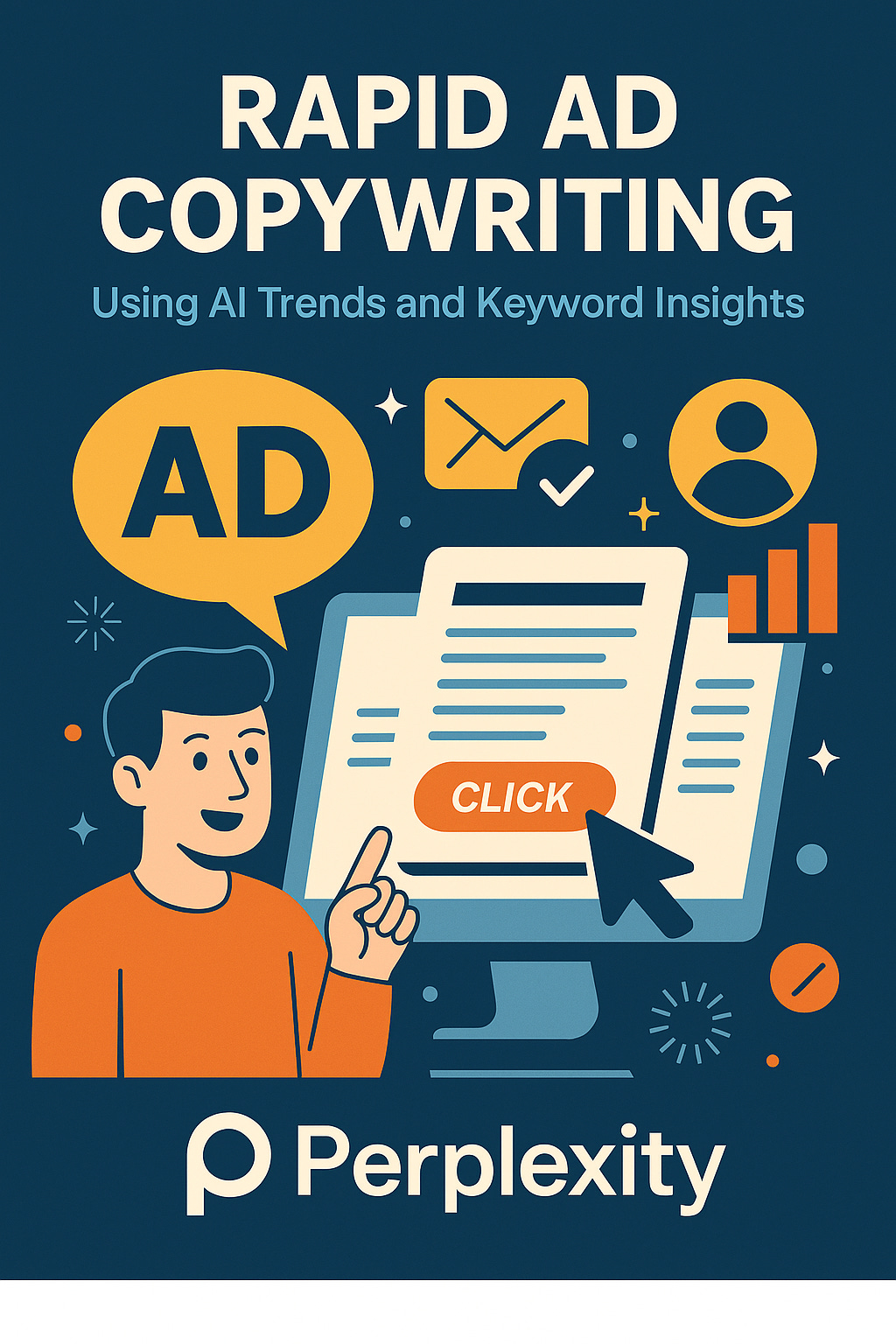Rapid Ad Copywriting Using AI Trends and Keyword Insights
Written by Fred Ferguson – GeezerWise on Substack at www.geezerwise.com #Perplexity
Most ad copy fails because it’s written from the advertiser’s perspective, not the audience’s.
We lead with what we want to say instead of what they want to hear — and then wonder why nobody’s clicking.
The truth? People don’t care about your product’s features until they believe you understand their problems. If you’re not speaking their language, you’re just adding to the noise.
How Perplexity Speeds Up Relevant Ad Copywriting
Perplexity’s Predictive AI can pull real audience data, trending keywords, and fresh market insights so your copy speaks directly to what people are thinking right now.
1. Lead With Urgent Pain Points
What’s keeping them up at night?
What’s the frustration they’re talking about in forums?
That’s your ad hook — not your product description.
2. Use Their Language, Not Yours
Mirror their words and phrases so your ad feels like it came from inside their head.
3. Focus on Desired Outcomes
Show them the results they want most — not just the process you use to get them there.
4. Handle Objections Upfront
Anticipate doubts and deal with them directly in your ad.
5. Differentiate From Competitors
Know what others promise — then position yourself to stand apart.
6. Create Authentic Urgency
Deadlines and scarcity only work if they’re real. Make the reason to act believable.
7. Add Social Proof That Matters
Choose testimonials, reviews, or credentials that your audience actually finds persuasive.
8. Craft Offers They Can’t Ignore
Price, bonuses, and payment options should remove resistance, not add to it.
9. Tap Emotional Triggers
Fear, relief, pride, ambition — the right emotion moves people to click.
10. Target Search-Based Language
Use the words they type (or speak) when they’re actively looking for a solution.
11. Nail the Timing
When are they most likely to be receptive? Timing can double your results.
12. Write Headlines That Demand Attention
Curiosity, emotional hooks, or bold benefits — the first line makes or breaks your ad.
13. Craft Compelling CTAs
Make the next step obvious and friction-free.
14. Match Format to Message
Video, image, text — pick the format that best fits the story you need to tell.
15. Adapt to Each Platform’s Personality
The same copy won’t work on Google, Facebook, LinkedIn, and Instagram. Adjust accordingly.
16. Be Helpful, Not Pushy
Blend value with promotion so people feel informed, not pressured.
17. Make Ads Memorable & Shareable
If they’d screenshot it for a friend, you’re onto something.
18. Leverage Seasonal & Trending Topics
Stay relevant by tying into what’s happening now.
19. Test the Right Variables
Headlines, offers, images, and CTAs — tweak one at a time for real insights.
20. Stay Compliant
Write strong copy that still passes platform guidelines.
21. Build Scalable Templates
Once you’ve got a winning formula, use it across multiple campaigns.
22. Align Post-Click Experience
Your landing page must deliver exactly what the ad promised.
The Bottom Line
Perplexity makes ad writing faster — but more importantly, it makes it more relevant.
When you match your audience’s real pain points with their own words and give them a reason to act now, you’re not just running ads — you’re starting conversations that lead to clicks, conversions, and customers.
💌 Know someone who’d appreciate this? Subscribe at GeezerWise.com to get future letters straight to your inbox.


